- Luật
- Hỏi đáp
- Văn bản pháp luật
- Luật Giao Thông Đường Bộ
- Luật Hôn Nhân gia đình
- Luật Hành Chính,khiếu nại tố cáo
- Luật xây dựng
- Luật đất đai,bất động sản
- Luật lao động
- Luật kinh doanh đầu tư
- Luật thương mại
- Luật thuế
- Luật thi hành án
- Luật tố tụng dân sự
- Luật dân sự
- Luật thừa kế
- Luật hình sự
- Văn bản toà án Nghị quyết,án lệ
- Luật chứng khoán
- Video
- NGHIÊN CỨU PHÁP LUẬT
- ĐẦU TƯ CHỨNG KHOÁN
- BIẾN ĐỔI KHÍ HẬU
- Bình luận khoa học hình sự
- Dịch vụ pháp lý
- Tin tức và sự kiện
- Thư giãn

TIN TỨC
fanpage
Thống kê truy cập
- Online: 223
- Hôm nay: 198
- Tháng: 1621
- Tổng truy cập: 5245625
This Is How Singapore Keeps Its Cool as the City Heats Up
Building design and technology are becoming increasingly important in the city’s fight to bring temperatures down.
Singapore is more focused than most places on finding ways to keep cool.
Perhaps that’s understandable. The Southeast Asian financial center has been heating up twice as fast as the world average over the past six decades, according to government data. And that’s in a city just 85 miles north of the equator, where daily temperatures already average around 27 degrees Celsius (81 Fahrenheit) year-round.
For decades, foliage has been a key tool in the city’s fight to keep temperatures down. But increasingly, building design and smart technology are central to the strategy: from petal-shaped, ventilating rooftops and cooling, underground water pipes to data modelling designed to help predict how future urban planning decisions will affect heat levels.
Part of the city’s battle is to reduce the temperatures experienced by its 5.7 million residents without drastically increasing its carbon footprint. Even as it strives to halve emissions by 2050, Singapore has more air-conditioning units per capita than anywhere else in Southeast Asia.
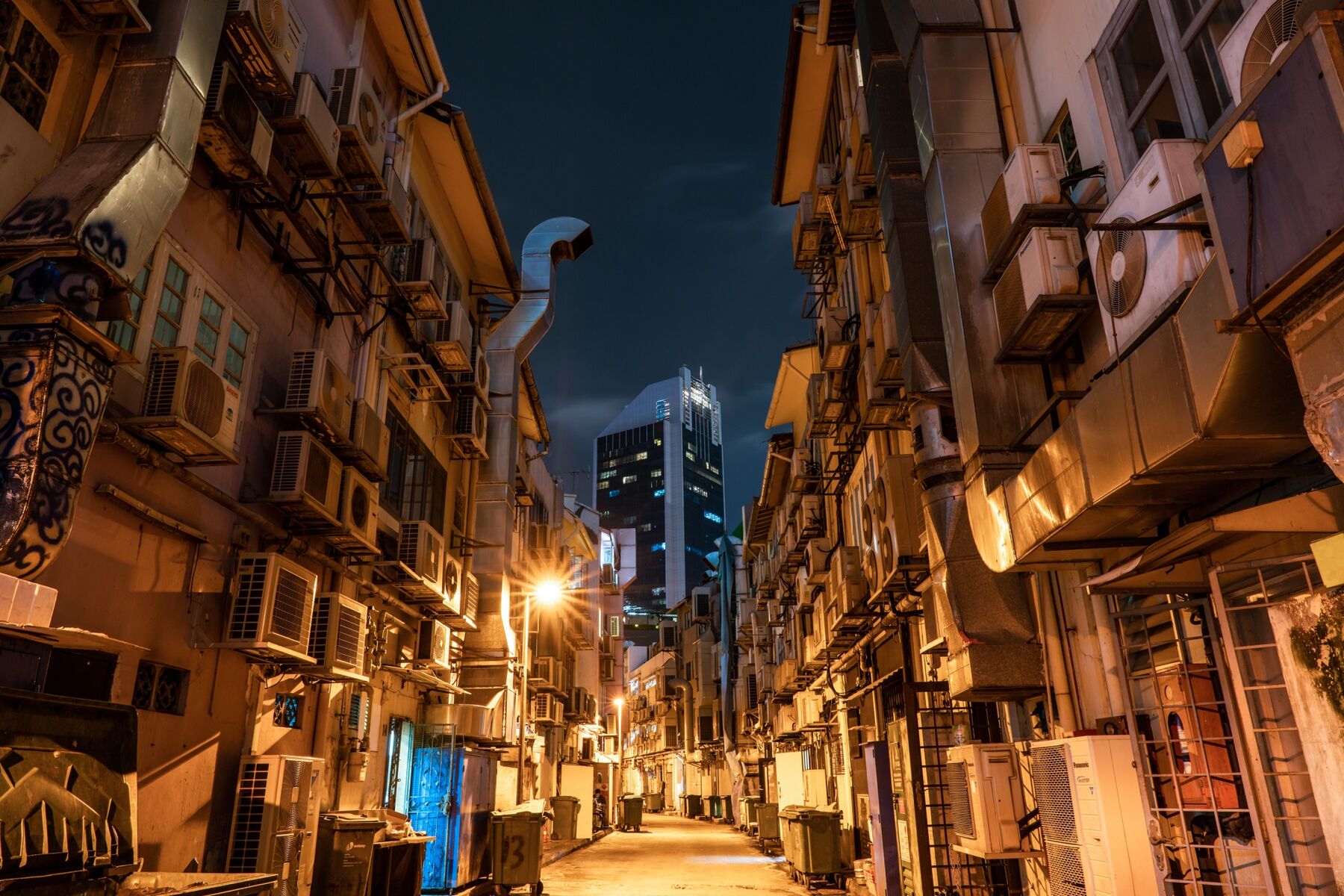
Air conditioners line the back alley of Circular Road in Boat Quay.Photographer: Siegfried Layda/Photodisc/Getty Images
“As Singapore is hot and humid, air conditioning becomes very pervasive but it’s also an energy guzzler,” said Wong Nyuk Hien, a professor at the National University of Singapore school of design and environment.
“Thus building design should be done to minimize the use of air conditioning. This will also reduce the waste heat dumped to the environment.”
Singapore’s climate-change problems are compounded by the Urban Heat Island effect. Thanks to hard, heat-absorbing surfaces, the temperature of a built-up urban area can be several degrees higher than the land around it. That variance has grown to 7 degrees Celsius from 4.5 degrees Celsius in 2004, according to research by Wong’s team and the Cooling Singapore project at the Singapore-ETH Centre (SEC), a research partnership between the city-state and Switzerland.
Staying Cool Comes at a Cost
Residents of hot, humid Singapore rely heavily on air conditioning
Annual air conditioner usage per person, 2020. Source: Euromonitor
The city’s commercial area can generate up to five times more human-generated heat than a residential area, said Dan Richards, principal investigator of the Natural Capital Singapore project at the SEC. While growing levels of traffic and industrial activity boost the amount of heat being released, tall buildings and narrow streets prevent it from escaping.
Singapore — also known as the Garden City — has long recognized the benefits of greenery. Vegetation can reduce air temperature by 1 to 2 degrees Celsius as well as providing shade, Richards said. Back in 1967, founding Prime Minister Lee Kuan Yew ordered that the island’s streets and roads be lined with shady Angsana and rain trees. And earlier this year, the government announced that it’s planting one million trees over the next decade, double the current pace. Coverage now stands about 56%, Wong said.
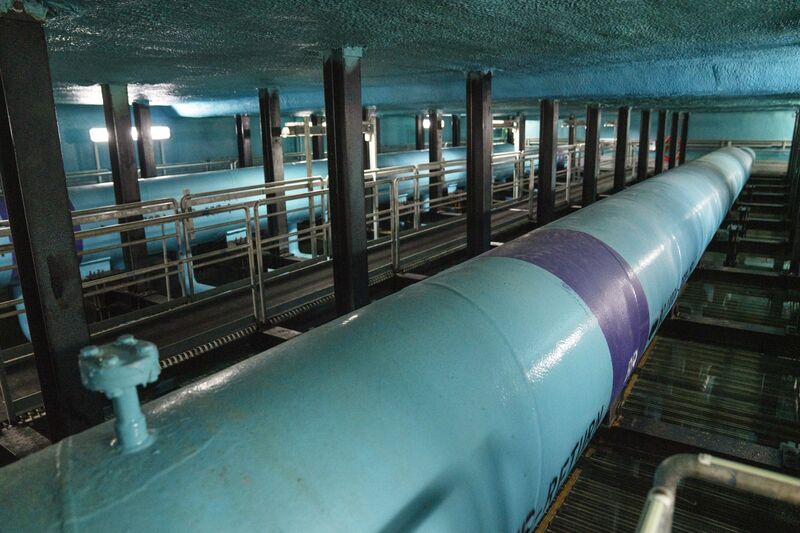
A thermal storage tank for the underground district cooling network. Chilled water is piped through buildings to cool the air. The system can reduce energy use by 30%. Photographer: Wei Leng Tay/Bloomberg
But there are limitations too. Having more trees can reduce wind speed and increase humidity. And the cooling effects of plants on building facades are only felt within a four-meter range, with little or no impact at greater distances, according to local studies.
“Whether or not these impacts of vegetation are ‘effective’ depends on the target that planners choose to set, but it also depends on whether alternative technologies and techniques can do better, or provide more cost-effective solutions,” Richards said.
Vegetation “cannot entirely compensate for the active and passive anthropogenic heat that is released into the urban system,” said Gerhard Schmitt, lead principal investigator of the Cooling Singapore project, which explores ways to reduce heat and creates tools and recommendations to help inform policy.
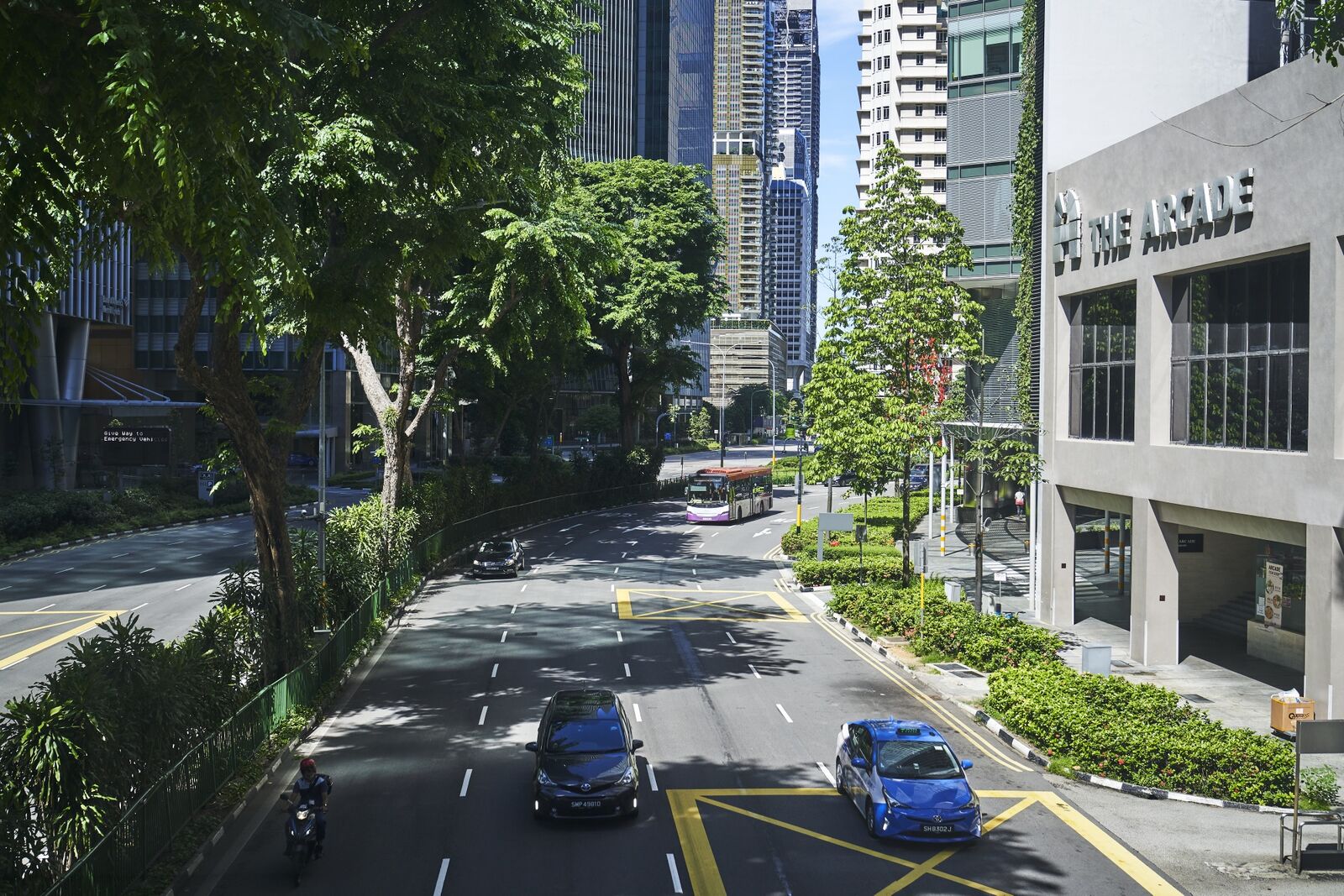
Founding Prime Minister Lee Kuan Yew ordered that the island’s streets and roads be lined with shady Angsana and rain trees in 1967. Photographer: Lauryn Ishak/Bloomberg
In September, the center announced it was producing a data model of the city. This “digital urban climate twin” — Duct for short — is designed to allow planners and policy makers to test the temperature impact of different scenarios. Duct will incorporate information on buildings, traffic, vegetation, land surfaces and movement of people, as well as factors such as wind and sunlight.
Singapore can potentially export Duct to other cities facing a similar challenge, Schmitt said.
“We can invent scenarios. We can design scenarios, test them before we actually build them. And if they test very well and we are sure that they will function, then we can start to build them and put them into reality,” he added. “Singapore will be using this new tool to figure out which actions it should take next.”

The Parkroyal Collection Pickering hotel has terraced gardens on the building’s exterior. Photographer: Mikel Bilbao/VW Pics/Universal Images Group/Getty Images
One key area for cities around the world is how urban areas can be better designed to provide natural cooling. In Singapore, varying building heights has been found to improve wind flow. Reflective surfaces on pavements and facades can reduce heat absorption, a tactic New York’s CoolRoofs program employs. Water features such as ponds and fountains can reduce peak ambient temperatures by several degrees, as Sydney-based researchers have pointed out.
Read More: Singapore’s City of the Future Is Its Greenest Project Yet
Design features at the building level can help. CapitaGreen, a 40-storey office building constructed by Singapore’s biggest developer CapitaLand Ltd., has a petal-like structure at the crown of the building that draws in cool air at a height of 242 meters (794 feet). At Woodlands Health Campus Hospital, which is expected to open in 2023, buildings are orientated in a north-south direction to minimize trapped warmth and campus roads are built underground to mitigate heat retention by the asphalt surfaces.

The CapitaGreen building has a petal-like structure at the top of the building that draws in cool air. Photographer: Wei Leng Tay/Bloomberg
Smart technologies can also improve temperature control. Over at upcoming new residential area Tengah, a district cooling network will be installed for the first time on the rooftops of public-housing blocks. Based on a commercial system in Singapore’s Marina Bay Financial District, chilled water is piped through the buildings to cool the air. The system’s operator, SP Group, says the network can reduce energy use by 30%, an emissions saving equivalent to taking 4,500 gasoline-powered cars off the road.
It’s clear all these tools, and more, will be needed to mitigate the effects of climate change on the city. Planting trees “cannot hurt and it is also conducive to the quality of life,” said Vinod Thomas, visiting professor at the Lee Kuan Yew School of Public Policy in Singapore.
“But it is not enough by itself by to reverse the warming of the city.”
By Bloomberg
Các bài viết khác
- Từ sự kiện Tổng biên tập báo TIME Greta Thunberg là Nhân vật của năm 2019 đến báo cáo Biến đổi khí hậu Phúc trình của IPCC báo động đỏ cho nhân loại 82021 (15.01.2020)
- Quốc gia tầm trung và định hướng ngoại giao chuyên biệt: Hàm ý với Việt Nam đến năm 2030 (12.12.2020)
- Nỗi lo về lạm phát hoàn toàn có thể manh nha trở lại trong thời gian tới! (24.11.2020)
- 3 điểm nóng mới của thị trường bất động sản (24.11.2020)
- Cởi trói đất đai để làm ăn lớn (24.11.2020)






















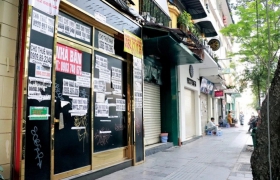
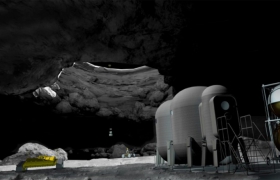

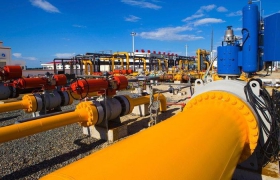



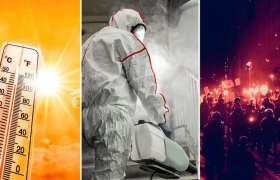

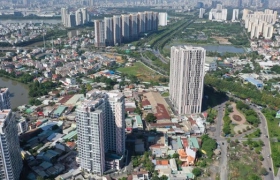


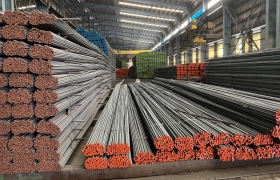















 Yahoo:
Yahoo: 